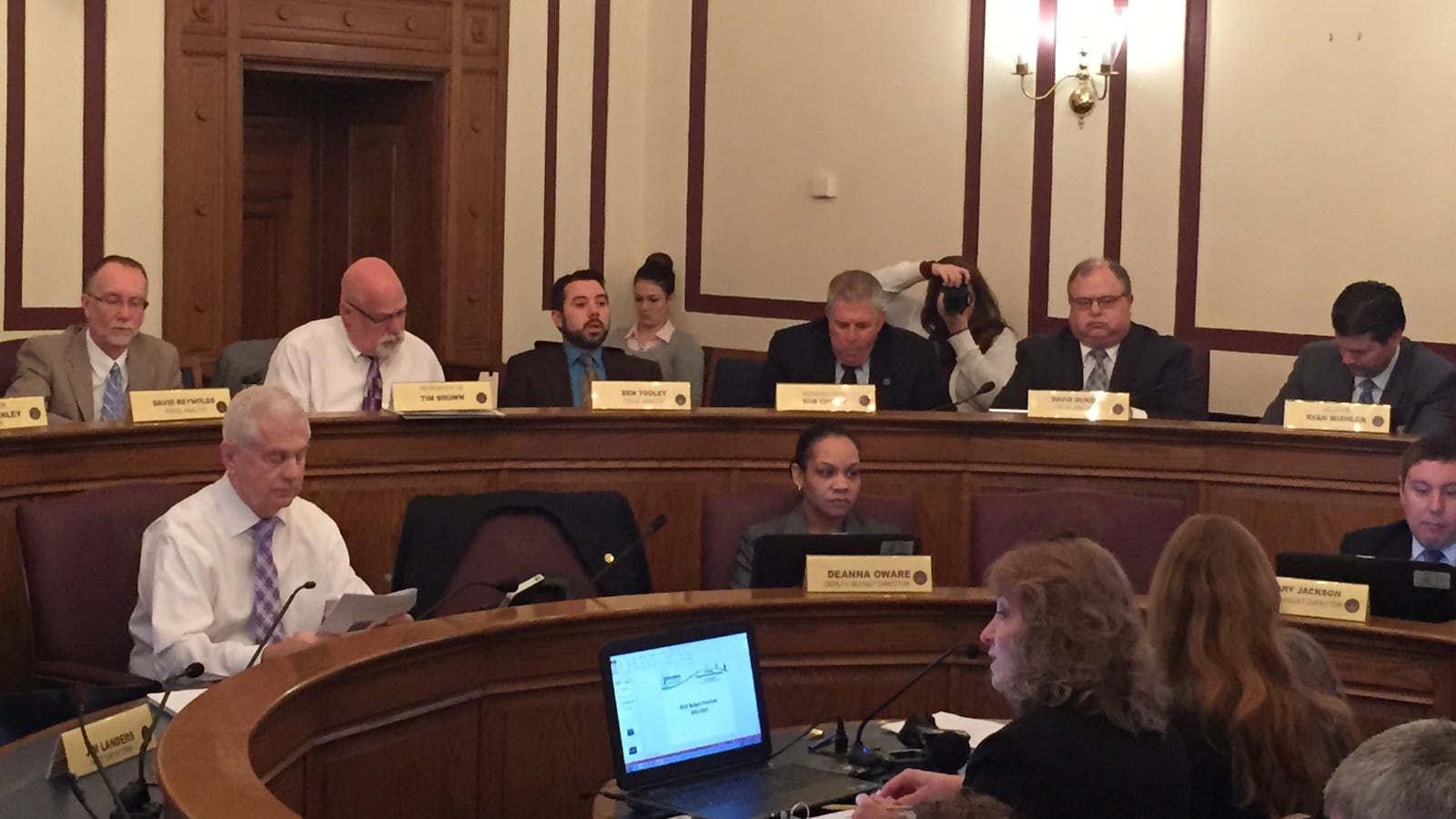Indiana’s move to create new state test to connect to its new academic standards — rather than follow Common Core standards and cheaper tests developed by other states to go with them — could be costly.
State Superintendent Glenda Ritz told a state budget committee today that her estimate for the annual cost of the new state tests being developed for 2015-16 is $65 million, a nearly 45 percent jump from annual cost in the last state budget.
That raised alarm for Sen. Luke Kenley, R-Noblesville, the chairman of the budget-making Senate Finance Committee.
“I keep wondering if we keep making it too hard and too expensive on ourselves,” he said.
The Indiana Department of Education won’t know the exact cost of the new tests until it finishes processing proposals from testing companies and selects one of them to create the new exam. The new tests will be more challenging than the current ISTEP, with more advanced material and computer-aided questions that require students to demonstrate how they got their answers using online tools.
Before 2014, Indiana was on track to use Common Core standards along with 45 other states. Two consortia of those states also developed tests to evaluate students based on Common Core standards. But earlier a Republican-led effort blocked further implementation of Common Core and a bill passed by the legislature ordered the creation of new Indiana-specific standards instead.
Kenley was among Republican leaders who voted against Common Core. Under the state’s prior contract with CTB/McGraw-Hill, ISTEP cost about $45 million annually.
“We are developing our own questions in the state of Indiana as we have always done,” said Ritz, the only Democrat holding statewide office in Indiana. “What we’re going through now is the (request for proposal) process, and so vendors clearly understand that they are aligning Indiana college- and career-ready standards to an assessment.”
Kenley and Rep. Tim Brown, R-Crawfordsville, asked Ritz if any standardized tests could be cut from the list of those currently given and what other measures could be taken to reduce testing costs. Kenley said perhaps a national standardized test that isn’t necessarily owned by and written expressly for Indiana might be cheaper.
“I’m trying to figure out if the General Assembly will have time to weigh in on this,” Kenley said. “I’m a little worried about that.”
For the 2015-16 school year, Ritz said, a completely new group of state accountability tests will be written. She said there are plans for a test for grades 3 through 10, high school English and Algebra 1 tests and an end-of-high school test. Ritz said the state is in the process of receiving bids from new vendors to write those tests, which must be presented to the budget committee for review before the State Board of Education can officially approve them.
Kenley asked Ritz during their exchange whether she was in favor of more or less testing.
“Well we always need less tests is my perspective,” Ritz replied. “But we want to be sure that we have an assessment system that actually informs learning and teaching.”
During the presentation, Ritz also asked that the committee consider adding the State Board of Education budget back into the budget for the Department of Education, given Gov. Mike Pence’s recent dissolution of his Center for Education and Career Innovation.
She told Kenley the department wouldn’t need the entire $2.9 million currently being spent to run the board.
“Historically it’s always been there, and it would amount to increased accountability and efficiency in running the State Board of Education operations,” Ritz said. “I really feel that that budget should come back to the Department of Education.”
Ritz has also called for a 3 percent increase over the next two years for school operation costs, such as hiring teachers and buying classroom materials. Ritz said the additional funding would address shortfalls in districts that struggle to support growing numbers of poor students.
“We are at 22 percent poverty with our children,” Ritz said. “Our children have basic needs that are not being met when they come to our schools.”

